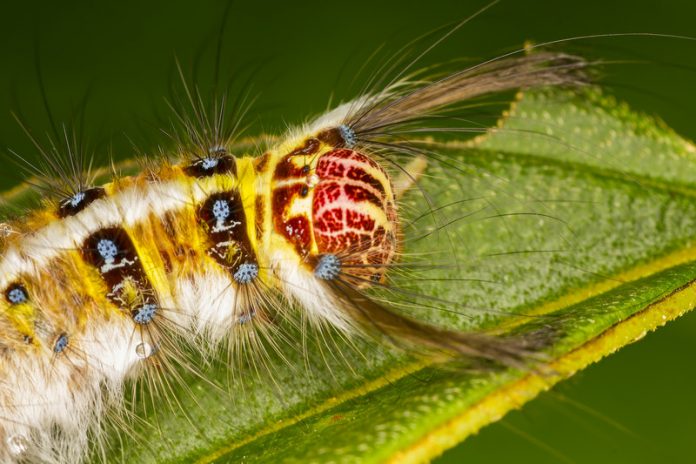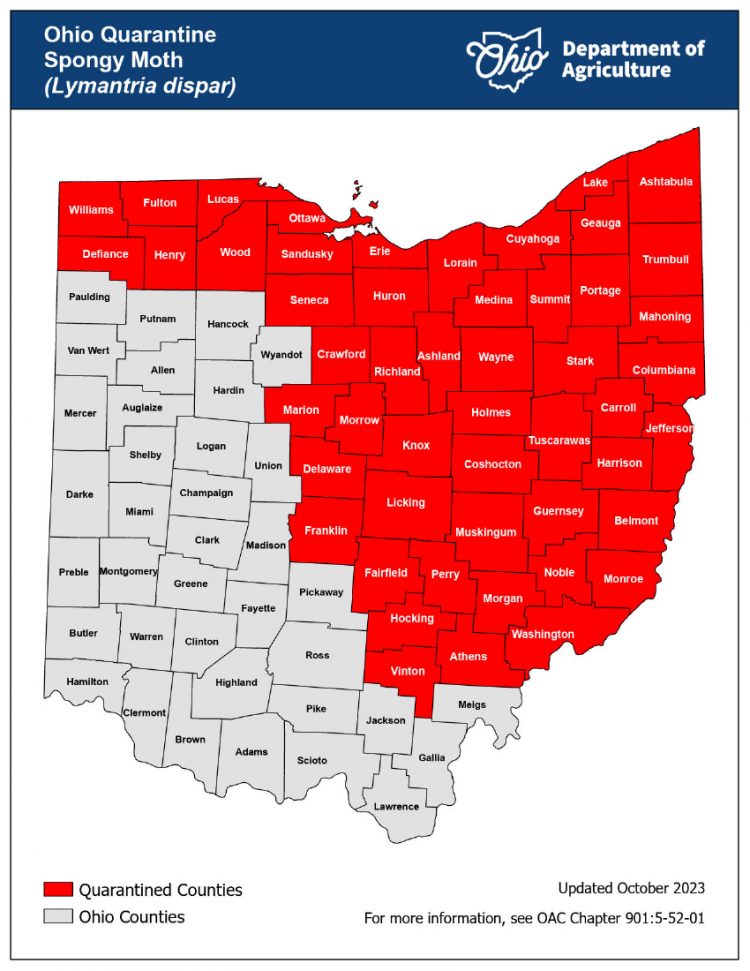
The Ohio Department of Agriculture will soon begin aerial sprayings to control populations of the invasive spongy moth (formerly gypsy moth) in Ohio.
Treatments will be applied in Auglaize, Fairfield, Hardin, Hocking, Knox, Licking, Logan, Vinton and Washington counties. In Ohio, 51 counties, including Mahoning, Trumbull and Columbiana, are currently under spongy moth quarantine regulations.
Spongy moths are invasive insects that defoliate over 300 species of trees and shrubs. In its caterpillar stage, the moth feeds on the leaves of trees and shrubs and is especially fond of oak. A healthy tree can usually withstand only two years of defoliation before it is permanently damaged or dies.
The spongy moth is a significant invasive forest pest that has moved west into Ohio from Pennsylvania and Michigan. Each egg mass a female lays contains between 500-1,000 individual eggs. Once hatched they are able to feed on the leaves of over 300 different tree and shrub species. One 2-inch larvae can consume up to 1 square foot of foliage every 24 hours.
In heavily infested areas, where there are 250 or more egg masses per acre, the spongy moth is able to completely strip the infested trees.
Natural spread occurs when newly hatched caterpillars hang from tree branches on silken threads, allowing themselves to be picked up in the wind. The wind can carry them for several hundred yards to a mile, to reach another food source. This is called ballooning. As the caterpillar grows larger, their mode of transportation changes to crawling from one food source to another.

Licking County will tentatively receive treatments the week of May 6, followed by a second application the week of May 13. The remaining applications are tentatively scheduled for mid-June, weather permitting. Treatment dates and information can be found on ODA’s Spongy Moth webpage.
Applications are administered using a low-flying yellow aircraft, approximately 100 feet above the treetops.
In most areas receiving treatments, ODA will use a single application of the product SPLAT GM-O. This product does not kill the moth, but it disrupts the mating process by confusing the male as it searches for a female mate. SPLAT is an organic and biodegradable formula that is completely harmless to both humans and animals.
A second product, Foray 48B, will be used in some Licking County areas to target the larval stage of the moth. This product is a naturally occurring bacteria found in soil. Spongy moth caterpillars ingest the protein and stop feeding.
If you come in contact with either product, wash the affected area with soap and water. Clothing can be cleaned with hot water and laundry detergent. According to the Ohio Department of Agriculture, these products are not harmful to birds, bees, plants, pets or humans.
When the project begins, daily updates on treatment progress across the state will be available on the website or by calling 614-728-6400.
Metro Monthly is a local news and events magazine based in Youngstown, Ohio. We circulate throughout the Mahoning Valley and offer print and online editions. Be sure to visit our publication’s website for news, features, local history, and the Metro Monthly Calendar. Office: 330-259-0435.
© 2024 Metro Monthly. All rights reserved.




